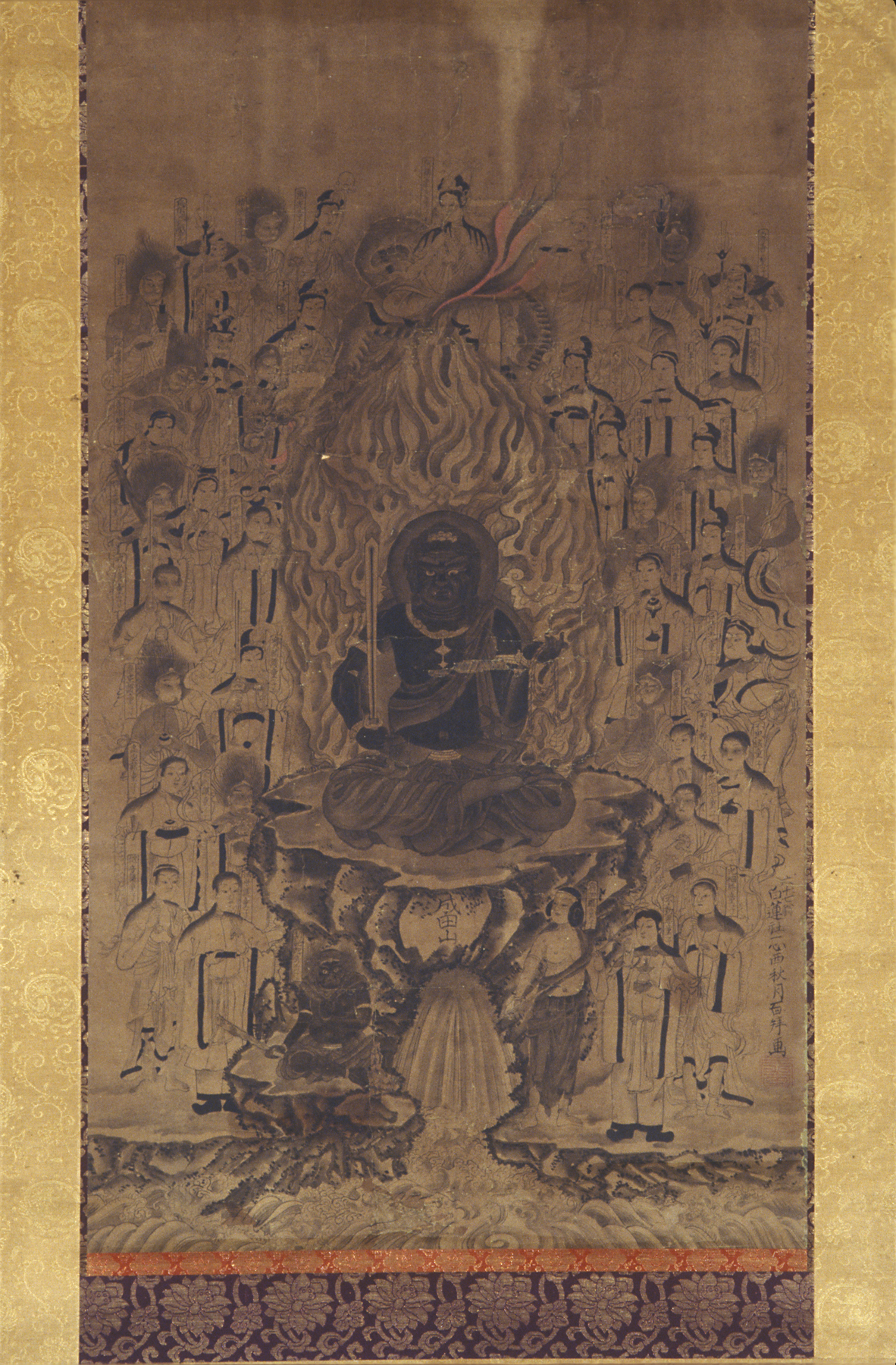Narita Fudō (Acalaratha), unknown maker from Japan
Artwork Overview
Narita Fudō (Acalaratha)
, possibly 1800
Where object was made: Japan
Material/technique: paper; ink; light colors
Dimensions:
Image Dimensions Height/Width (Height x Width): 100.5 x 47.5 cm
Image Dimensions Height/Width (Height x Width): 39 9/16 x 18 11/16 in
Object Height/Width (Height x Width): 157.5 x 60.1 cm
Mount Dimensions (Height x Width x Depth): 62 x 23 11/16 in
Roller Dimensions (Width x Diameter): 65.5 cm
Roller Dimensions (Width x Diameter): 25 13/16 in
Image Dimensions Height/Width (Height x Width): 100.5 x 47.5 cm
Image Dimensions Height/Width (Height x Width): 39 9/16 x 18 11/16 in
Object Height/Width (Height x Width): 157.5 x 60.1 cm
Mount Dimensions (Height x Width x Depth): 62 x 23 11/16 in
Roller Dimensions (Width x Diameter): 65.5 cm
Roller Dimensions (Width x Diameter): 25 13/16 in
Credit line: Gift of Elsie Anna Wilson Trust
Accession number: 1994.0116
Not on display
If you wish to reproduce this image, please submit an image request





